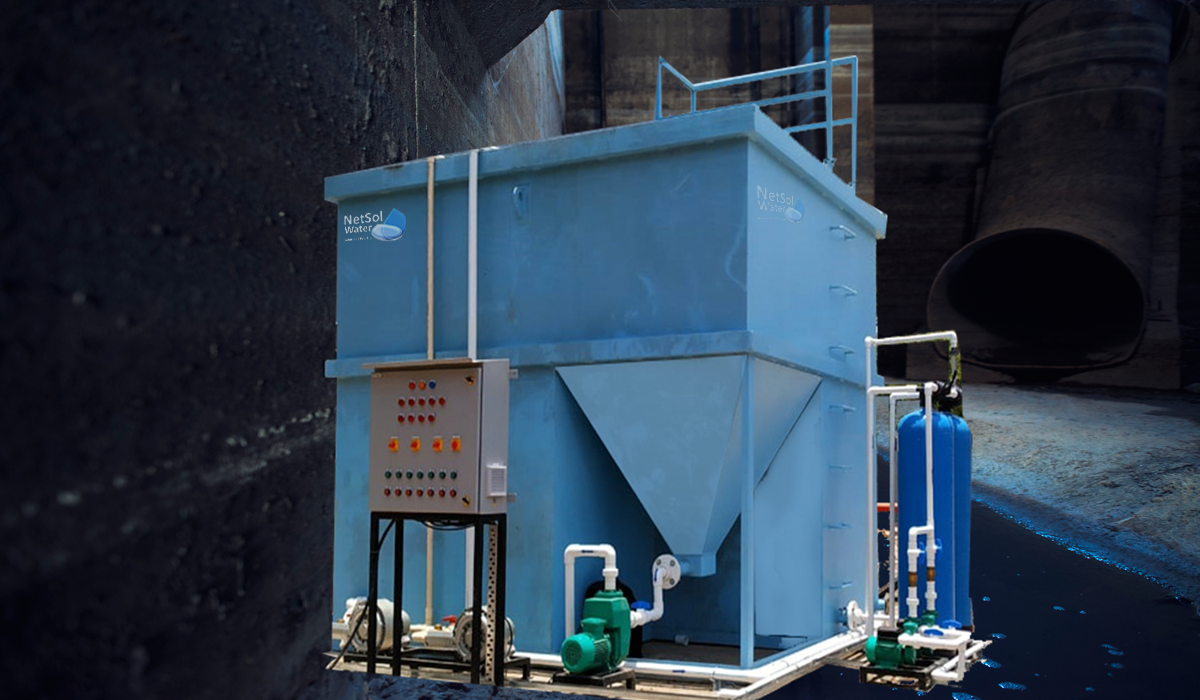
Untreated wastewater shouldn’t accumulate in any way. It consists of perished organic matter. However, these accouterments can produce a huge amount of foul-smelling gases that can be poisonous to the terrain, If kept for a while. Besides this, it also contains other poisonous composites that can be dangerous if exposed to the terrain for a long. thus, it’s important to remove wastewater from its source and clean it. also, due to the failure of water, exercise is an excellent option. Do you know Which is most Commonly Used Sewage Treatment Plant in India?
With time, MBBR technology become the most Commonly Used Sewage Treatment Plant in India, has come to an established process for wastewater treatment due to the advanced and innovative technology it uses and the cost of Moving Bed Biofilm Reactor which has reduced drastically down as compared to the other technology. As per the combined query of Quality, Technology, and Cost, MBBR is one of the most considered sewage treatment plants in India.
MBBR Sewage Treatment Plant
The Moving Bed Biofilm Reactor( MBBR) wastewater treatment process was first constructed in the late 1980s.
The MBBR process has an aeration tank with plastic transporters filled with wastewater. This gives way to the growth of biofilm. The viscosity of these carriers and water is the same. generally, activated sludge systems bear recycling of the sludge, which isn’t the case in the MBBR process.
It’s considered to be a better option as compared to other conventional styles.
Benefits of MBBR Sewage Treatment Plant
- Complete solid junking
- Smaller units require lower space
- Increased process stability
- Increased treatment volume
- Periodic backwashing isn’t required
- Sludge product is dropped
- Advanced settling characteristics
- Accessible to use
- Reliable and effective
- Cost-effective
Working of Sewage Treatment Plant
Wastewater Plant (STP Plant) is treated in 3 phases primary( solid removal), secondary( bacterial decomposition), and tertiary( extra filtration).
Common Key Terms in wastewater/ sewage treatment
- Primary Treatment is the first phase of sewage treatment wastewater is placed in a holding tank and solids settle to the bottom where they’re collected and lighter substances like fats and oils are scraped off the top.
- Secondary Treatment is where waste is broken down by aerobic bacteria incorporated into the wastewater treatment system.
- Tertiary Treatment is designed to filter out nutrients and waste particles that might damage sensitive ecosystems; wastewater is passed through fresh filtering lagoons or tanks to remove redundant nutrients.
- Effluent Sewage water that has been incompletely treated and is released into a natural body of water; an inflow of any liquid waste.
Sewage is generated by domestic and industrial establishments. It includes household waste liquid from toilets, baths, showers, kitchens, cesspools, and so forth that’s disposed of via seamstress. In numerous areas, sewage also includes liquid waste from assiduity and commerce. The separation and draining of ménage waste into greywater and blackwater are getting more common in the advanced world. Greywater is water generated from domestic conditioning similar to laundry, dishwashing, and bathing, and can be reused more readily. Blackwater comes from toilets and contains mortal waste.
Sewage treatment is done in three stages primary, secondary and tertiary treatment.
- Primary Treatment
In the primary treatment of STP Plants, sewage is stored in a basin where solids( sludge) can settle to the bottom and oil painting and lighter substances can rise to the top. These layers are also removed and also the remaining liquid can be transferred to secondary treatment. Sewage sludge is treated in a separate process called sludge digestion. - Secondary Treatment
Secondary treatment removes dissolved and suspended biological matter, frequently using microorganisms in a controlled terrain. utmost secondary treatment systems use aerobic bacteria, which consume the organic factors of the sewage( sugar, fat, and so on). Some systems use fixed film systems, where the bacteria grow on pollutants, and the water passes through them. Suspended growth systems use “ actuated ” sludge, where putrefying bacteria are mixed directly into the sewage. Because oxygen is critical to bacterial growth, sewage is frequently mixed with air for grease decomposition. - Tertiary Treatment
Tertiary treatment( occasionally called “ effluent polishing ”) is used to further clean water when it’s being discharged into a sensitive ecosystem. Several styles can be used to further disinfect sewage beyond primary and secondary treatment. Beach filtration, where water is passed through a beach sludge, can be used to remove particulate matter.
Wastewater may still have high situations of nutrients similar to nitrogen and phosphorus. These can disrupt the nutrient balance of submarine ecosystems and beget algae blooms and inordinate weed growth. Phosphorus can be removed biologically in a process called enhanced natural phosphorus junking.
In this process, specific bacteria, called polyphosphate accumulate organisms that store phosphate in their tissue. When the biomass accumulated in these bacteria is separated from the treated water, these biosolids have a high toxin value. Nitrogen can also be removed using nitrifying bacteria. Lagoon is another system for removing nutrients and waste from sewage. Water is stored in a lagoon and native plants, bacteria, algae, and small zooplankton sludge nutrients and small particles from the water.
Sludge Digestion
Sewage sludge scraped off the bottom of the settling tank during primary treatment is treated independently from wastewater. Sludge can be disposed of in several ways. First, it can be digested using bacteria; bacterial digestion can occasionally produce methane biogas, which can be used to induce electricity. Sludge can also be incinerated, condensed, hatted to disinfect it, and reused as a toxin.
Now you will get all the details of the commonly used sewage treatment plant in India. You can ask any question if you have any.
If you are looking for a leading sewage treatment plant manufacturer company, call +91-9650608473, Netsol Water. One of the leading STP Machine manufacturers, Effluent treatment plant manufacturers, and Industrial/commercial RO plant manufacturers based in Greater Noida, UP, India.
